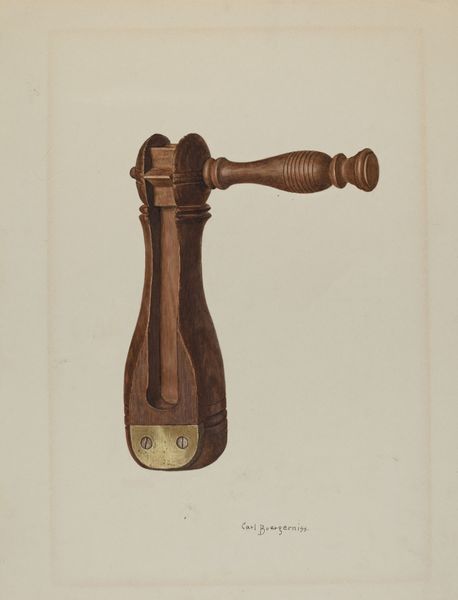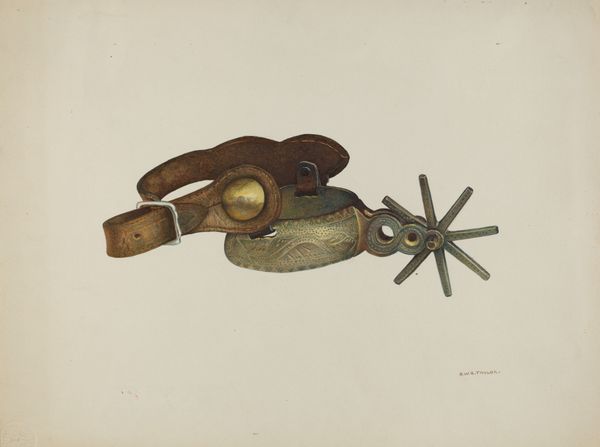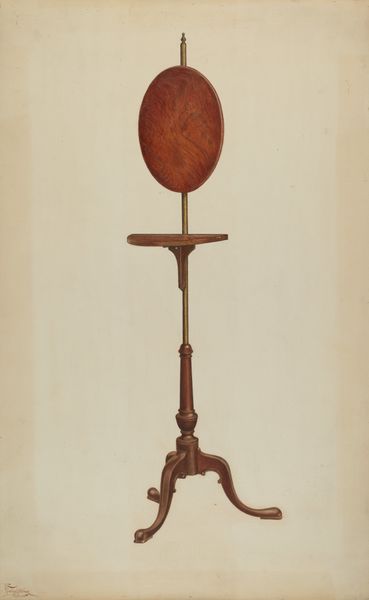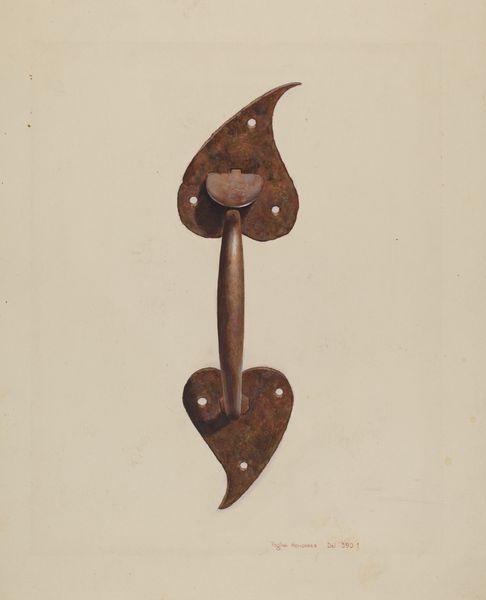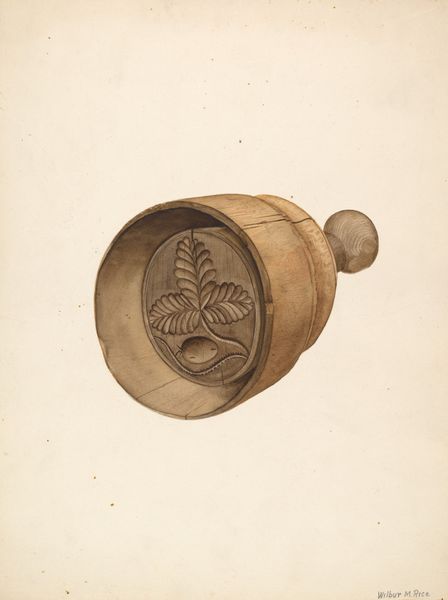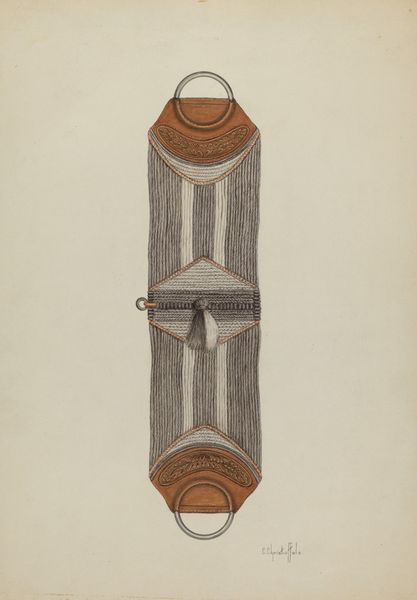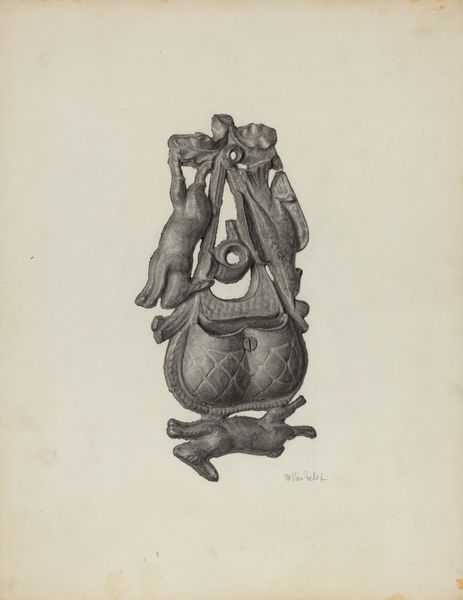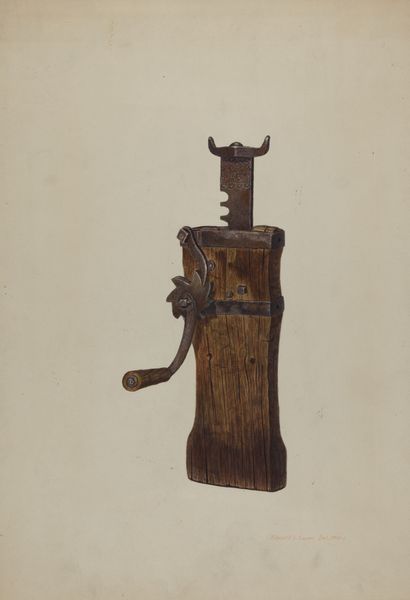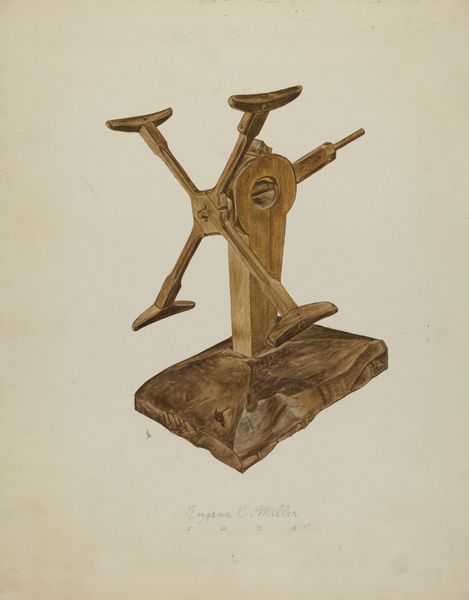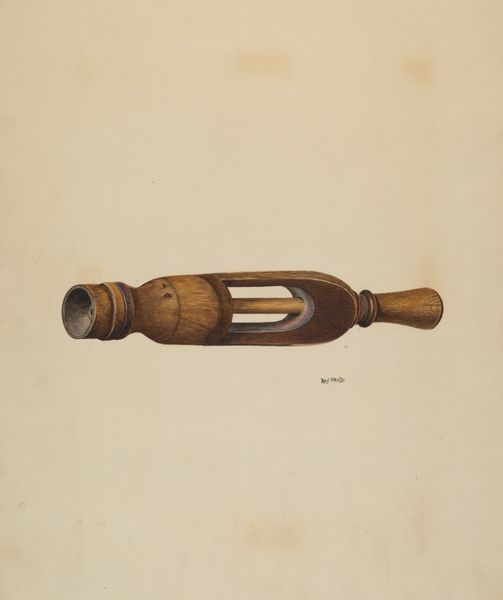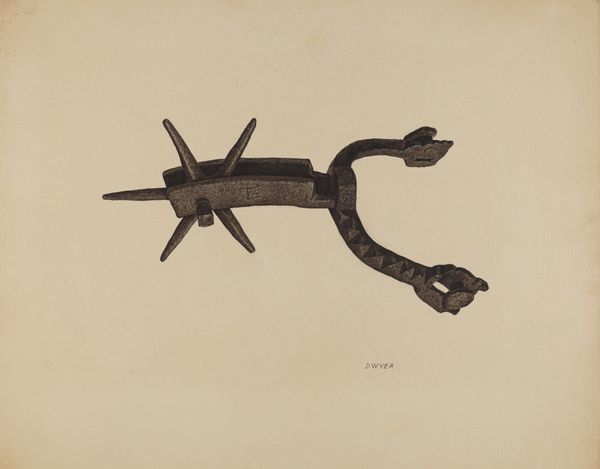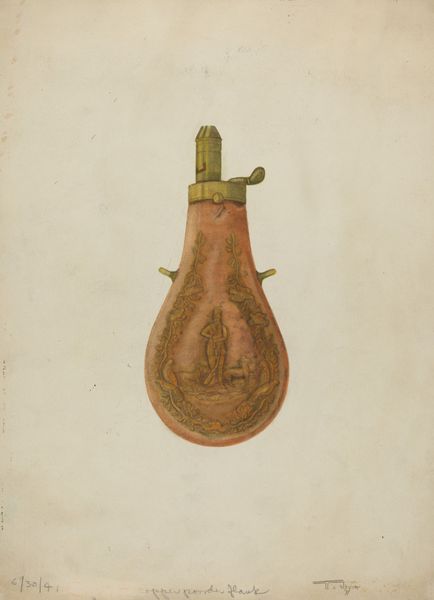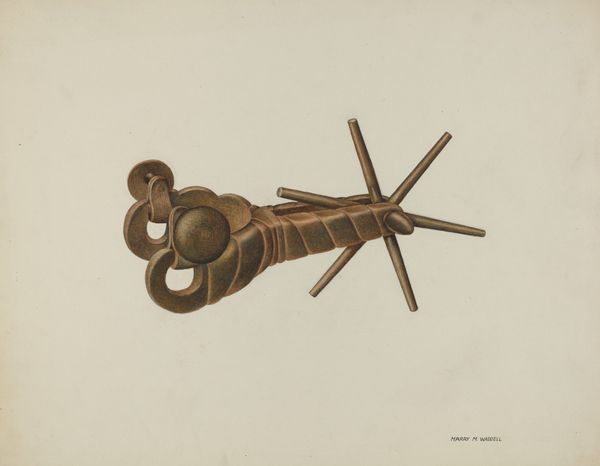
watercolor
#
watercolor
#
realism
Dimensions: overall: 54.3 x 42.2 cm (21 3/8 x 16 5/8 in.) Original IAD Object: 12 7/8" high; 5 3/8" wide
Copyright: National Gallery of Art: CC0 1.0
Curator: Here we have Albert Rudin’s watercolor, "Naval Clapper," created around 1939. It depicts exactly what the title suggests: a hand-operated siren. Editor: The first thing that strikes me is its quiet presence. Such a seemingly ordinary, albeit rather hefty object, rendered with such focused care... it gives this instrument of warning a somber quality, almost as if contemplating the alarms it might have heralded. Curator: Indeed. The piece is so interesting because the watercolor almost softens this utilitarian tool. Consider its use. The artist captures not the action, but its static existence, inviting viewers to consider its purpose in times of conflict. Editor: And look at how painstakingly he details every surface imperfection. He seems determined to elevate the common object and transform this manual machine of maritime terror, through process, material and realism, into a precious still-life artifact. How remarkable it must be to know the social and economic context of war influenced and defined labor processes and consumption on this period! Curator: Absolutely. And one must remember, watercolor as a medium allows for incredible control and layering. I can almost imagine him patiently building up the tones to achieve that convincing sense of rust and worn metal. Did he paint from real life or memory, I wonder? It makes me nostalgic in some undefinable way. Editor: Either way, he was clearly committed to capturing its presence. Consider all those details…each bracket, knob, bolt rendered with precision in ways that highlight it's manufactured origins! So impressive and precise when watercolor by nature can often feel less premeditated. Curator: This watercolor is more than a depiction. It prompts reflection on function, fragility, and history itself. Editor: Yes, so much of an object’s essence comes down to how and why something’s made; by examining it we gain not just aesthetic experience but historical context.
Comments
No comments
Be the first to comment and join the conversation on the ultimate creative platform.

